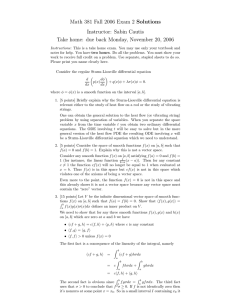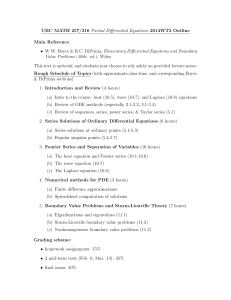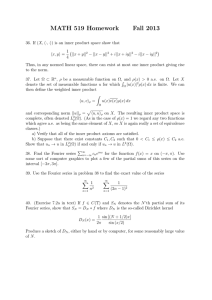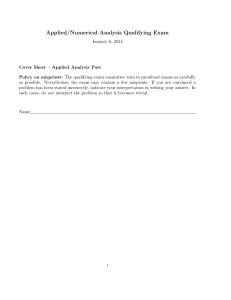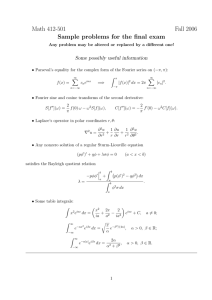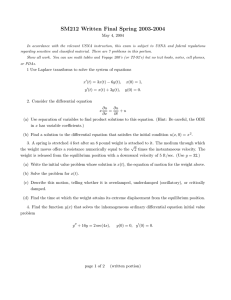Math 381 Fall 2006 Exam 2 Instructor: Sabin Cautis
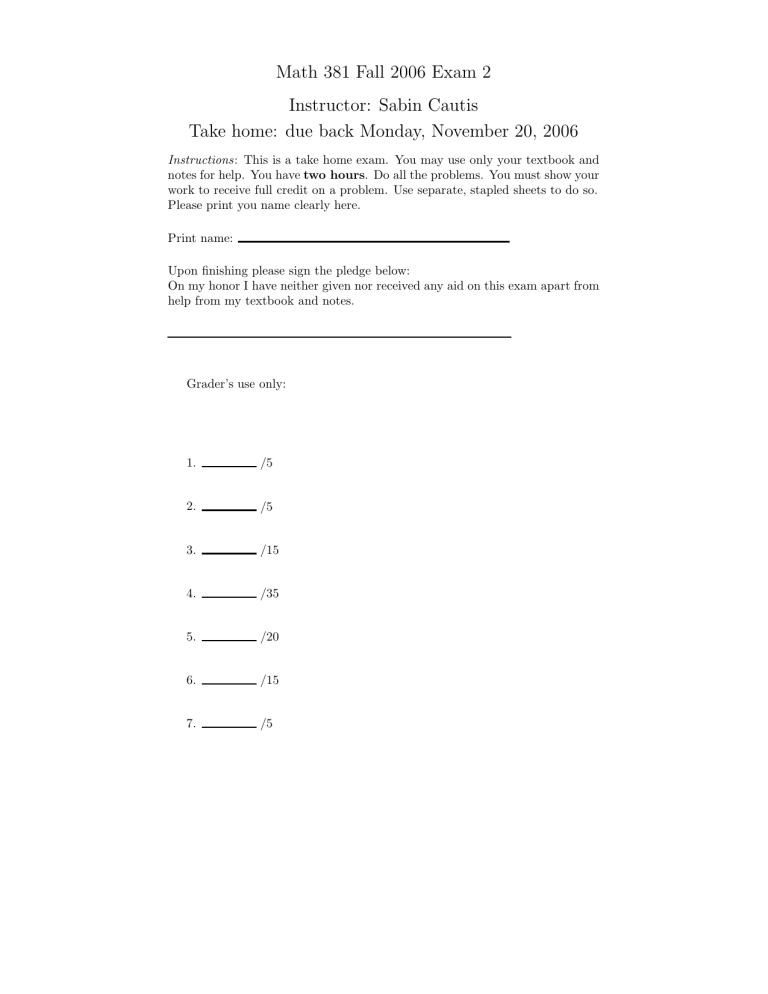
Math 381 Fall 2006 Exam 2
Instructor: Sabin Cautis
Take home: due back Monday, November 20, 2006
Instructions : This is a take home exam. You may use only your textbook and notes for help. You have two hours . Do all the problems. You must show your work to receive full credit on a problem. Use separate, stapled sheets to do so.
Please print you name clearly here.
Print name:
Upon finishing please sign the pledge below:
On my honor I have neither given nor received any aid on this exam apart from help from my textbook and notes.
Grader’s use only:
5.
6.
7.
3.
4.
1.
2.
/ 20
/ 15
/ 5
/ 5
/ 5
/ 15
/ 35
Consider the regular Sturm-Liouville differential equation d dx p ( x ) dφ dx
+ q ( x ) φ + λσ ( x ) φ = 0 .
where φ = φ ( x ) is a smooth function on the interval [ a, b ].
1. [5 points] Briefly explain why the Sturm-Liouville differential equation is relevant either to the study of heat flow on a rod or the study of vibrating strings.
2. [5 points] Consider the space of smooth functions f ( x ) on [ a, b ] such that f ( a ) = 0 and f ( b ) = 1. Explain why this is not a vector space.
3. [15 points] Let V be the infinite dimensional vector space of smooth functions f ( x ) on [ a, b ] such that f ( a ) = f ( b ) = 0. Show that h f ( x ) , g ( x ) i = b
R a f ( x ) g ( x ) σ ( x ) dx defines an inner product on V .
4. [35 points] Let L be the linear differential operator on V defined by
L ( φ ) =
1
σ ( x ) d dx p ( x ) dφ dx
+ q ( x ) φ .
Show that L is self adjoint with respect to the inner product h f, g i = b
R a f gσdx . [Hint: use integration by parts like in the proof of Lagrange’s identity].
5. [20 points] Assuming L as defined above is self adjoint show that two eigenfunctions and λ
2
φ
1 and φ
2 of L corresponding to different eigenvalues λ
1 b are orthogonal with respect to the inner product h f, g i = R a f gσdx .
6. [15 points] Denote the eigenfunctions of L by φ
1
( x ) , φ
2
( x ) , . . .
and let f ( x ) be a smooth function on [ a, b ]. Determine the generalized Fourier series f ( x ) ∼ P ∞ coefficients a n
).
n =1 a n
φ n
( x ) of f ( x ) (ie. determine the generalized Fourier
7. [5 points] If f ( x ) is smooth on [ a, b ] is it equal to its generalized Fourier series from the previous question? Give an example of a function on [ a, b ]
(not necessarily continuous) whose generalized Fourier series is not equal to it (explain why not).
